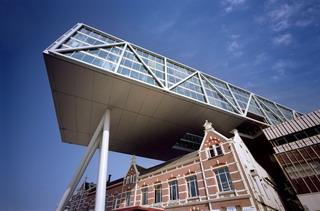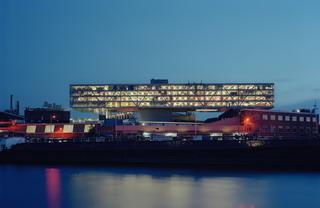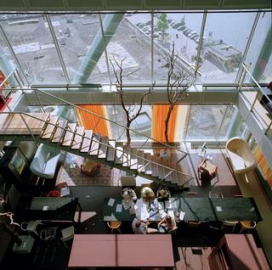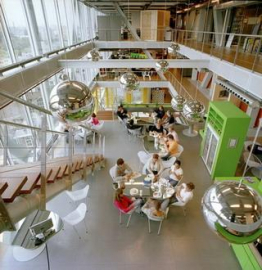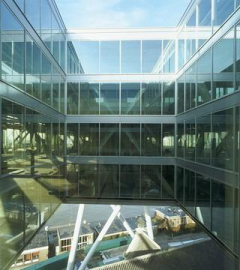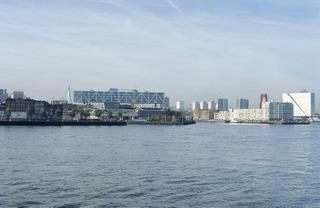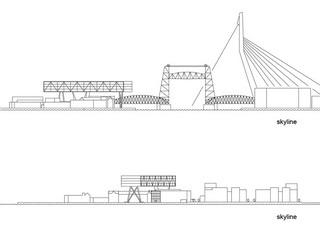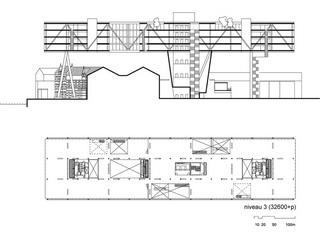The Bridge
The former industrial area around the old Blue Band margarine factory at the end of the Feijenoord district in Rotterdam is being transformed into a residential and work area. By placing the extra offices required by Unilever above rather than alongside the partially retained factory buildings, more space was made available for housing.
The new office block, consisting of four 32 by 133 metre floors of office space, is suspended above the buildings in a steel lattice construction. This construction rests on a central column containing the lift, stairs and service ducts, on a emergency stair column and on a huge triangular steel column. The glass-walled volume is largely free of closed internal walls and is transected by voids which allow daylight to penetrate deep into the building and which ensure magnificent views out from just about any position on the work floor.
The De Brug office building for Unilever Nederland is an inventive instance of achieving greater density by the double utilization of land. The way a new office block arches on legs over an existing factory complex appeals to the imagination, and opens up new perspectives for similar locations where existing lowrise takes little if any advantage of a fabulous vista. It is striking how the untidy urban layout of the vicinity is revitalized by the addition of a single volume of relatively modest dimensions. The building also makes a substantial new contribution to Rotterdams skyline. The concept of a city above the city in the Utopian New Babylon project by Constant Nieuwenhuis is here brought within the realms of feasibility.
The exterior presents a spectacular engineering concept in which the appearance of the building is largely dominated by the compelling logic of the structure. The architecture does not attempt to counteract this concept with subtle detailing.

